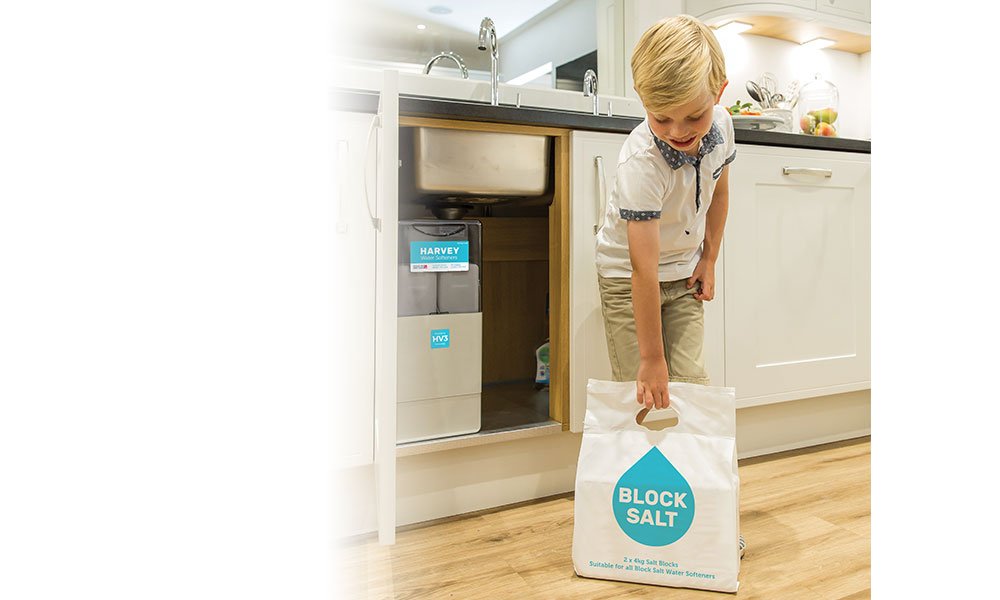
The cost of purchase and installation of a water softener in the UK can vary greatly, as there are many options available to get you started with softening your hard water.
Its very simple to split the costs down to the cost of purchasing the unit and the cost of any plumbing work that is required. With all these things, there are a number of variables that need to be taken into account; we will look at the most common scenarios in order to try and answer the question as simply as possible.
Firstly the cost of a softener.
When you start to look into water softeners you will notice that you can find units ranging from around £300 to as much as £4000, which is a huge variation. However, although the principal is the same for all water softeners, the products in the upper end of the market are considerably different to those at the lower end. Like many consumer products, you are mostly paying a premium for a premium product but there are some exceptions, so it’s a case of buyer beware or at least – buyer be well informed!
Once you have decided on the type of softener that will suit your family and home, you can look at the various options and consider the price variations. Its also important to understand how the family unit runs. By this, I mean the way the family operates. Do you all get up at approximately the same time in the morning and leave the house together, then returning together at the end of the day. Do you have a number of teenagers as well as adults in the house, who seem to be always in the bath or shower? Are you regularly running your washing machine and dishwasher each day (and sometimes twice a day for both of these products like me?). These factors need to be taken into consideration and an easy way to work out the best product for your home environment is to look at the number of bathrooms and the number of people in the property (on a regular basis).
What will you get for your money?
A budget between £300-£500 will give you an entry level water softener. Usually imported and utilising basic resin (not suitable for drinking). This type of softener will be okay for a couple of years but then its life will be limited; probably more cost effective to go again rather than service/repair. Limited life and matching limited guarantee.
£500-£750 is moving into the more reliable part of the market. Simple yet sound products can be found in both electric and non electric categories. A slightly longer manufacturers guarantee on parts and probably worth repairing/servicing if a fault should develop.
£750-£1000 In this price bracket, you will start to see extended guarantees on both parts and labour. You will be buying a quality build product with a long life expectancy. Food grade resin should be normal at this price.
£1000-£2000 will buy you the best in a domestic water softener. Not only extended guarantees but also guaranteed food grade resin. Sturdy build and tried and tested technology. Beware gimmicky add ons that may add to the overall cost. Remote controls and mobile phone apps may make life easier but they do add to the cost of the softener without making any contribution to the way the softener works.
£2000+ For the very largest of domestic properties with many bathrooms and people to use those bathrooms. At this price, you will be bordering on a small commercial unit.
COST OF INSTALLATION
Once you have decided on your softener, you need to look at where you are going to install it. This is not as daft as it sounds as softeners can be installed in many places but the most common is adjacent to the rising main in the property. This is usually located under the kitchen sink but can be in other places such as a utility room or near to the boiler. Softeners can also be positioned in lofts, under the stairs, in cloakrooms, in many places. They do need a waste outlet and they do need to be as close as possible to the rising main.
Now the difficult bit; properties in the UK are not uniform. We all live in very different houses with different plumbing set ups. Some people have ancient plumbing with more than one rising main or a brand newly built bespoke property with everything designed around the family that lives there – and then there is everything in between. Older properties, newer properties, flats, bungalows, houses, listed buildings etc.
If your property has previously had a water softener and the plumbing is sound, complete with a bypass valve, then your installation costs will be nil or very small. You simply connect the inlet and outlet, the waste and the overflow, locate a power source (if you need it) plug in, fill with salt and away you go. However, you would need to ensure that the space that any previous softener took up is sufficient for your new softener. Water softeners do not all have their connections in the same place on the unit. So if a previous softener was connected on the side or the back of the unit, you will need to check that your new softener will fit. You will need to be able to lift the lid of the softener in order to top up with salt, on a regular basis, so headroom is vital.
If you are new to water softeners and installing at your property for the first time, you will need to tee off from the rising main (to go through the softener) and then feed back from the softener into the cold water supply. You will need a bypass valve to isolate the softener and enable you to remove the unit for servicing, replacement or to take it with you when you move. You also need to be able to reach a waste outlet. Overall, the plumbing work for a water softener is very similar to that of a washing machine and can be tackled by a competent DIY-er or a plumber. If you are going to do the installation yourself, the cost of the plumbing parts needed are going to be relatively small, assuming that the installation is straightforward. Certainly no more than £20-£50 depending on where you buy your plumbing bits from.
If you are going to use a handyman or a professional plumber, then the cost will increase. We suggest that you check with them first to see how much they will charge as it can vary from plumber to plumber and also whereabouts in the country you are. A straightforward installation should not be costing any more than the £100 mark. However, as previously mentioned, all properties are very different and may have different requirements.
HOW MUCH DOES A SOFTENER COST TO RUN?
So once you have your plumbing organised and you have purchased your softener, what about ongoing costs?
Electrical power
If you have a softener that needs an electrical connection, the power usage is minimal. Most use a transformer to regenerate the softener as required. Pence per month rather than pounds.
You will need salt for your softener, for it carry out its regeneration programme. The amount of salt required will depend on how much water passes through your softener, which is
dependent on how much water is used in the household, so there is no ‘average’ salt usage, as such.
Tablet Salt
Tablet salt is normally supplied in 20kg and 10kg bags; 10kg being much easier to handle. Tablet salt is available from many outlets. Some will deliver the salt to your door and other places you will need to transport it yourself. A simple internet search will reveal a local stockist or one that will deliver and the price involved.
Block Salt

Block salt is normally supplied in twin packs with each block weighing 4kg. Block salt is more expensive than tablet salt. It is a myth that you cannot use tablet salt in a block salt softener. The block salt is gradually dissolved over the period of usage from the bottom up. The same thing happens with tablet salt when it is in the cabinet of the softener. There is only one manufacturer of block salt in the UK which explains their stance on recommending block salt. Again an internet search will reveal a local stockist or one that will deliver and the price involved.
Servicing/Maintenance
Once your softener is correctly installed and you have a regular top up regime, there isn’t a great deal else you need to do in order to enjoy soft water. However, like other household appliances involving water, you do need to keep an eye on them as sometimes a component or part might need attention. Keeping the unit clean and free from foreign bodies is all you will need to do in the first few years of its life. If your softener is under warranty and has a problem, then your supplier will help you find a resolution. Out of warranty units can normally be repaired or considered for replacement, depending on the problem.
It is recommended that your softener has a service every few years. There are many companies that offer this facility. Servicing is best carried out at a service centre as softeners can be connected to a water supply and thoroughly checked in all aspects of their performance. An on site service can only be a visual check, a hardness water test and a simple run through the controller.
The best bit…
So that’s it. All you need to know about the costs of installing and owning a water softener, however – and this is the best bit – your initial outlay to install this rather unexciting bit of kit will be far outweighed by the amount of money you will start to SAVE. Living with soft water has many cost benefits and advantages.
By removing limescale from your water supply you will notice a big difference in the amount of detergents and products you use around the house. Less washing powder and fabric conditioner. Fewer cleaning products and in particular, expensive limescale removers. Less personal care products such as shampoo, conditioner and shower products. Then there are the BIG savings in that household appliances will live longer and perform better during their life. The property central heating boiler, washing machines, dishwashers, kettles, coffee machines. Bathrooms and sanitary ware, including toilets, shower screens and that really obvious one – the taps and plugs around the property.

In addition to all of this you will also save yourself TIME. Saving time by not cleaning and scrubbing around the house.